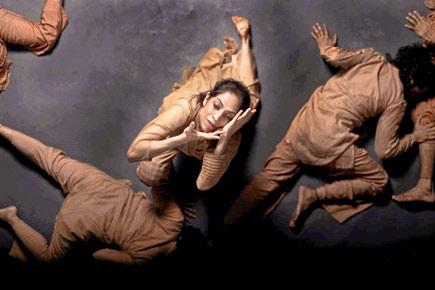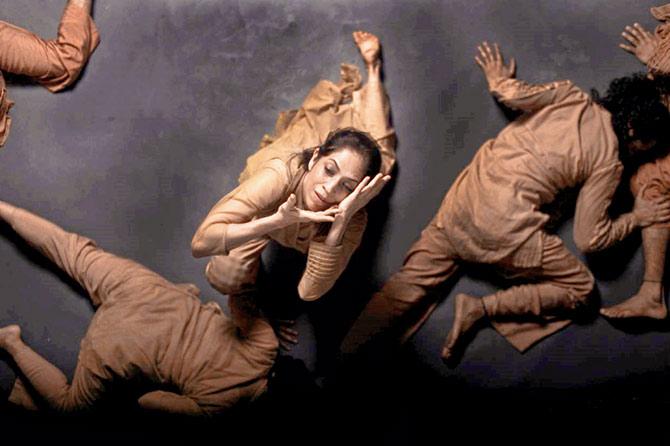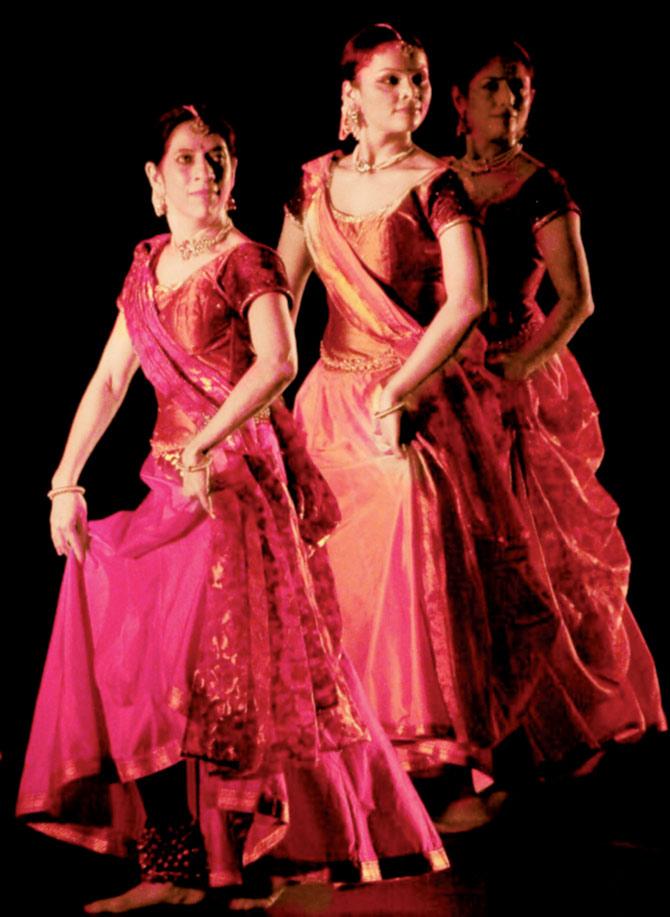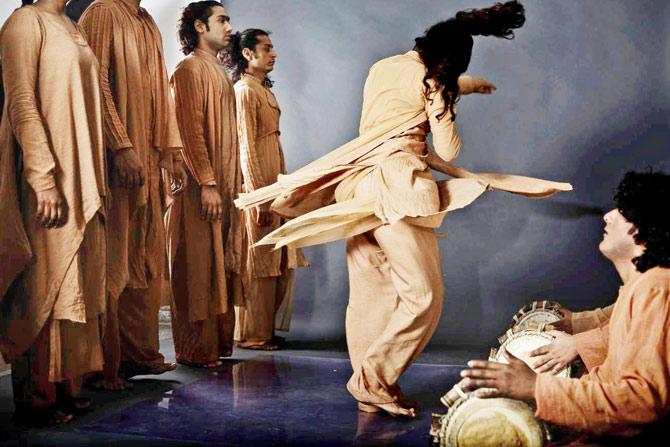Ahead of presenting her new contemporary piece Aditi Mangaldas talks about learning to love dance as if it were a darling, with Suprita Mitter

Scenes from INTER_RUPTED
![]() Q. Tell us about INTER_RUPTED.
Q. Tell us about INTER_RUPTED.
A. The piece emerges from the body and depicts vulnerability and inevitability. It looks to answer the question that when my skin and muscles degenerate, where does my emotion reside? In life, we try to hold on to things. This piece is 80-minute-long with a cast of seven dancers and three musicians. We have worked with some of the best collaborators in dance, including, Farooq Chaudhry (co-founder and producer of Akram Khan Dance Company) as dramaturge, Morag Deyes as mentor, Fabiana Piccioli as light designer, Kimie Nakano as costumier and Manish Kansara as the stage designer. It infuses the ancient art form of Kathak with 21st-century sound, rhythm and light. I will also conduct a masterclass series inviting senior and intermediate level students.
ADVERTISEMENT

(From left) scenes from INTER_RUPTED
Q. What is your take on fusion?
A. I am a Kathak dancer. I also perform Contemporary dance based on Kathak. I hope my dance is not fusion as that’s confusion. That would be grafting an apple on the head of a pear. I have danced Kathak for 49 years. The sensibility is contemporary.

Aditi Mangaldas with members of her dance company
Q. How did you take up dance?
A. I don’t belong to a family of dancers. It’s a family of entrepreneurs, and academics. But my desire to dance and create dance was born out of an atmosphere of freedom, an ambience in which ideas and imagination were encouraged to flower. My paternal grandmother lived with us, and the extended family would visit her. I would stand up on a table and address the 20 something gathering, saying, “Look at me,” demanding their attention. I was enrolled into music, art and dance classes. I started learning dance when I was five. I first began dancing with Shrimati Kumudini Lakhia, one of the pioneers of contemporary Kathak-based innovations. From her, I learnt to be free and fearless, the ability to understand the relation of body to space. From my second guru, Shri Birju Maharaj, I learnt to love dance as if it were a human.

Q. What themes inspire you?
A. I have always believed in exploration. I’ve had a lot to do with feminism. When I started I always felt that everything revolved around a man, in our society. Themes like love and seeking answers interest me too. I’ve performed Khusrau, Kabir and Meerabai too. We did a production where we looked at Krishna as life. We performed a piece about looking within and removing the brutality within us, why people commit heinous crimes. It was infirmed by the Nirbhaya incident. As a dancer, I talk about life through abhinaya. I like to showcase the canvas of my life and not restrict it to a particular religion or gender.
Q. With multiple entertainment options and technology, how does the form stay relevant?
A. As artistes, technology is not a distraction. I can talk to you on my mobile phone instead of a landline, which would have been dead because of the rains. There is a lot of information available. Having said that, you have to be more dedicated and passionate. The form evolves with time too. What started with Kathakars in temples, who told mythological stories, had to change in the Mughal courts as it didn’t work then. Artistes transformed it and the purpose changed to Rasikas and entertainment. Today, it has to be adapted for a world with loads of information and exposure, only then can you hold the attention of a young person. They have to be convinced that they can’t get the experience anywhere, online, for example.
Q. Does TV offer the exposure to Classical forms like they need?
A. You can’t come to this field with a retirement plan. It requires passion and what you derive from it is more than wealth can buy. It is unfair to say that dancers should live on love and fresh air. It is tough. In the West too, the life of a ballet or serious contemporary dancer will be tougher like that of an Opera singer would be harder than that of a Pop singer. These are not popular forms and a lot of time has to be invested. Many reality shows allow only two minutes for a form to be showcased. It needs to be thought of on a long-term basis. We should refuse mediocrity and dance schools, shows and teachers should be able to say that mediocre work won’t make it, and the participant’s talent lies elsewhere.
 Subscribe today by clicking the link and stay updated with the latest news!" Click here!
Subscribe today by clicking the link and stay updated with the latest news!" Click here!






